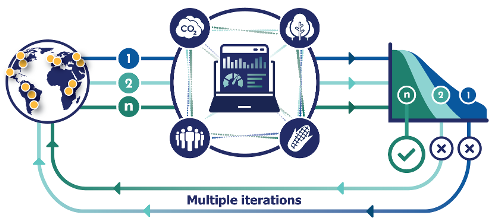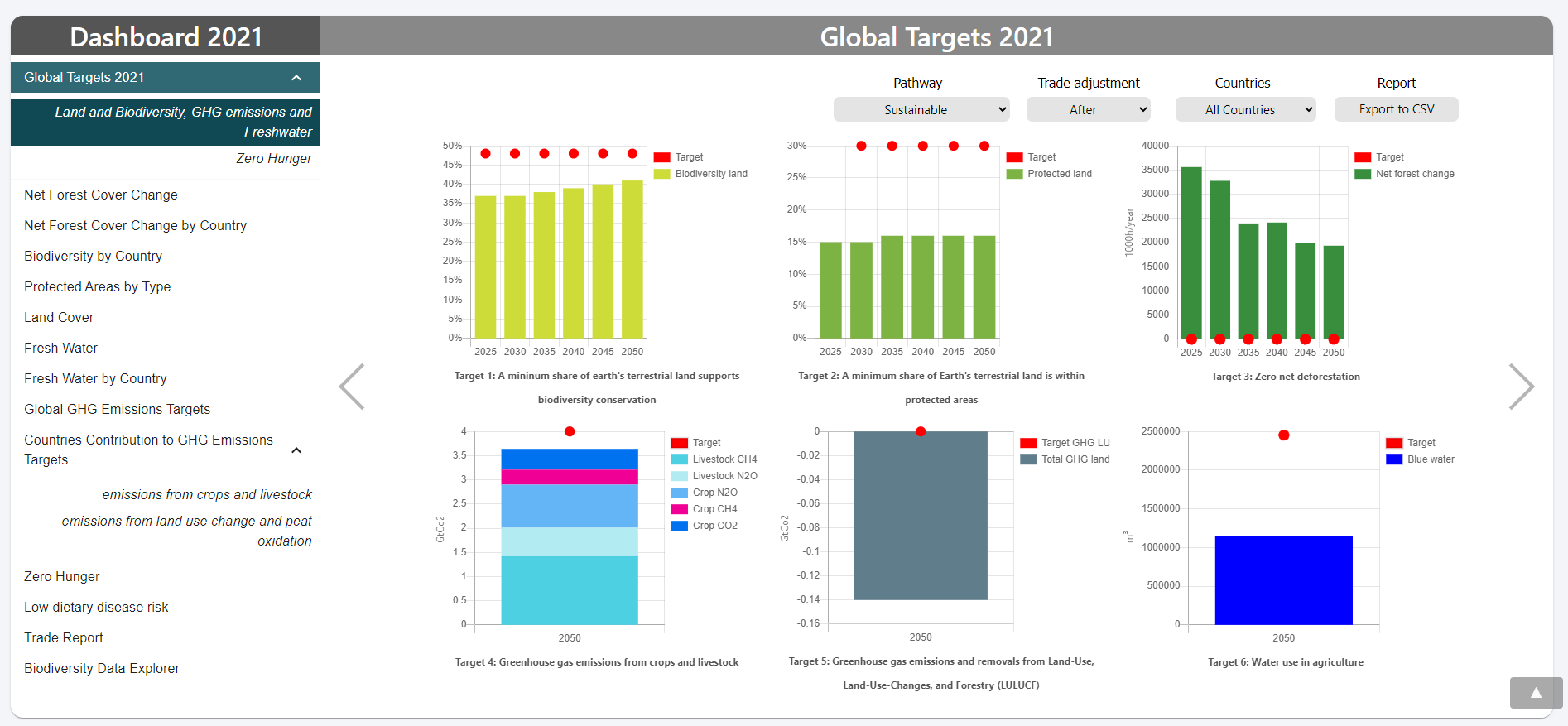How does it work?
The Scenathon (“Scenario-Marathon”) is a participatory decision-making exercise that integrates models, stakeholders, and technology to collectively solve complex, large-scale multi-objective problems. The FABLE Consortium has applied the Scenathon concept to answer questions related to the sustainable transformation of food and land-use systems at the national and global scales.
 Figure. Schematic of the Scenathon: Multiple stakeholder teams seek to achieve in an iterative process collectively agreed goals, while also realizing individual targets. The FABLE Consortium has applied the Scenathon to food and land-use questions. (Source: Sperling, Javalera-Rincon/ IIASA staff).
Figure. Schematic of the Scenathon: Multiple stakeholder teams seek to achieve in an iterative process collectively agreed goals, while also realizing individual targets. The FABLE Consortium has applied the Scenathon to food and land-use questions. (Source: Sperling, Javalera-Rincon/ IIASA staff).
The Scenathon is an iterative process, in which country teams adjust their assumptions and pathways to ensure balanced trade flows and to progressively increase the level of ambition to meet the global targets.
1. Each country team sets the assumptions on the evolution of imports and exports for each commodity independently, using the FABLE Calculator. The teams upload their national pathways to the FABLE global platform. At this first stage, country teams do not consider the domestic changes that are foreseen by the other exporting and importing countries.
2. The Linker Tool. FABLE Secretariat balances trade by proportionally adjusting the export quantities from each exporter to match global imports for each product and each time step. The Linker Tool adds countries’ net trade volumes and offers a platform for country teams to visualize and discuss trade imbalances in the future for their commodities of interest. This process encourages country teams to adapt their scenarios knowing how demand from importing countries is projected to evolve. It helps ensure consistency across national pathways, aligning the assumptions that country teams make on international agricultural trade..
3. National indicators are summed up and potential gaps between the collective achievement and the global targets are highlighted. If targets are not met, country teams are encouraged to revise their pathways’ underlying assumptions to raise their level of ambition towards achievement of the sustainability objectives. Another iteration can be run to try to close the gap with global targets.
Based on the results from these Scenathons, FABLE has produced a variety of publications analyzing different pathways for sustainable food and land-systems.
The Scenathon Dashboard
The Scenathon dashboard shows the results covering all FABLE targets and the contribution of each country pathway to each global target. It highlights national and global results and potential gaps between the achievement and the global targets and identifies opportunities for greater ambition in some countries.
The platform provides critical content for countries to raise concerns regarding fairness and burden-sharing, different local vulnerabilities to environmental change, or the country’s financing capacity.
